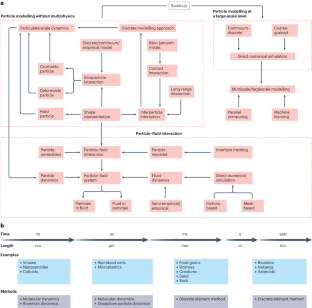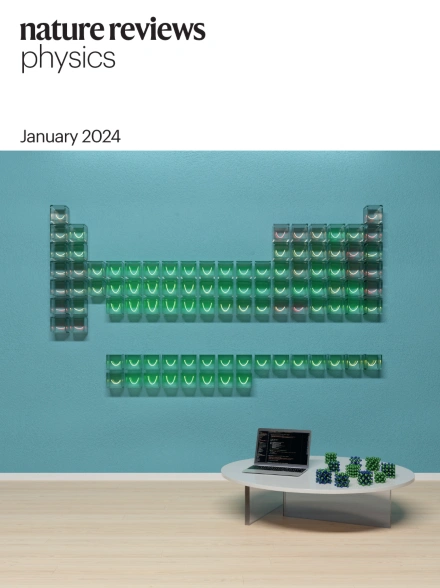The role of particle shape in computational modelling of granular matter
IF 44.8
1区 物理与天体物理
Q1 PHYSICS, APPLIED
引用次数: 3
Abstract
Granular matter is ubiquitous in nature and is present in diverse forms in important engineering, industrial and natural processes. Particle-based computational modelling has become indispensable to understand and predict the complex behaviour of granular matter in these processes. The success of modern computational models requires realistic and efficient consideration of particle shape. Realistic particle shapes in naturally occurring and engineered materials offer diverse challenges owing to their multiscale nature in both length and time. Furthermore, the complex interactions with other materials, such as interstitial fluids, are highly nonlinear and commonly involve multiphysics coupling. This Technical Review presents a comprehensive appraisal of state-of-the-art computational models for granular particles of either naturally occurring shapes or engineered geometries. It focuses on particle shape characterization, representation and implementation, as well as its important effects. In addition, the particles may be hard, highly deformable, crushable or phase transformable; they might change their behaviour in the presence of interstitial fluids and are sensitive to density, confining stress and flow state. We describe generic methodologies that capture the universal features of granular matter and some unique approaches developed for special but important applications. Granular matter is ubiquitous in engineering, industrial and natural processes. This Technical Review overviews the latest developments in computational modelling of granular matter with a focus on the role of particle shape and discusses pertaining future challenges.


颗粒形状在颗粒物质计算建模中的作用
颗粒物质在自然界无处不在,并以各种形式存在于重要的工程、工业和自然过程中。要了解和预测颗粒物质在这些过程中的复杂行为,基于颗粒的计算建模已变得不可或缺。现代计算模型的成功需要对颗粒形状进行现实而有效的考虑。由于天然材料和工程材料在长度和时间上的多尺度性质,其真实的颗粒形状带来了各种挑战。此外,颗粒与其他材料(如间隙流体)之间的复杂相互作用是高度非线性的,通常涉及多物理场耦合。本技术综述全面评估了自然形成或工程几何形状颗粒的最新计算模型。其重点是颗粒形状的表征、表示和实现,以及其重要影响。此外,颗粒可能是坚硬的、高度可变形的、可挤压的或可相变的;它们可能在存在间隙流体时改变其行为,并对密度、约束应力和流动状态敏感。我们将介绍捕捉粒状物质普遍特征的通用方法,以及针对特殊但重要的应用而开发的一些独特方法。颗粒物质在工程、工业和自然过程中无处不在。本技术综述概述了颗粒物质计算建模的最新发展,重点关注颗粒形状的作用,并讨论了相关的未来挑战。
本文章由计算机程序翻译,如有差异,请以英文原文为准。
求助全文
约1分钟内获得全文
求助全文
来源期刊

Nature Reviews Physics
Multiple-
CiteScore
47.80
自引率
0.50%
发文量
122
期刊介绍:
Nature Reviews Physics is an online-only reviews journal, part of the Nature Reviews portfolio of journals. It publishes high-quality technical reference, review, and commentary articles in all areas of fundamental and applied physics. The journal offers a range of content types, including Reviews, Perspectives, Roadmaps, Technical Reviews, Expert Recommendations, Comments, Editorials, Research Highlights, Features, and News & Views, which cover significant advances in the field and topical issues. Nature Reviews Physics is published monthly from January 2019 and does not have external, academic editors. Instead, all editorial decisions are made by a dedicated team of full-time professional editors.
 求助内容:
求助内容: 应助结果提醒方式:
应助结果提醒方式:


